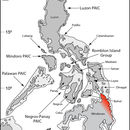en
names in breadcrumbs


Previous taxonomic assessments of species in this genus recognized six groups of species that shared similar morphologies (see Brown and Alcala, 1980). Subsequent analyses of morphology and phylogenetic studies have not supported the monophyly of these species groups, and large taxonomic revisions are needed in this diverse group of ground skinks to sort out the true species diversity and appropriate generic assignments of its members. This species has traditionally been considered a member of Group 1 species in the genus Sphenomorphus. Group 1 species were diagnosed as moderate sized, brownish species, with a greater number of scale rows (90 or more) between the parietals and the base of the tail (Brown and Alcala, 1980).
In recent study of Philippine forest skinks, Linkem et al. (2011) used molecular data to test the monophyly of previously hypothesized species groups within the genus Sphenomorphus. Results of the study indicated widespread taxonomic instability, and as a result, broad taxonomic changes were made to the genus, resurrecting available names as well as describing new genera.
Sphenomorphus diwata can be distinguished from congeners by the following combination of characters (1) medium body size (SVL 51.4–58.5 mm); (2) paravertebral scales 90–93; (3) midventral scales 44–46; (4) midbody scales 38–42; (5) number of supraoculars contacting frontal 2; (6) Toe IV lamellae 14–16; (7) prefrontal scales in contact; (8) frontoparietal scales not fused; (9) venter pale yellow.
Sphenomorphus diwata is known from the diwata Mountains of northeastern Mindanao Island in the Philippines.
Mindanao Pleistocene Aggregate Island Complex (PAIC; Brown and Diesmos, 2002).
SVL 51.4–58.5 mm
Diwata Mountain Range, Surigao del Sur Province, Mindanao Island, Philippines; type in the California Academy of Sciences; CAS-SU 24178
The diwata sphenomorphus (Sphenomorphus diwata) is a species of skink found in the Philippines.[2]
The diwata sphenomorphus (Sphenomorphus diwata) is a species of skink found in the Philippines.